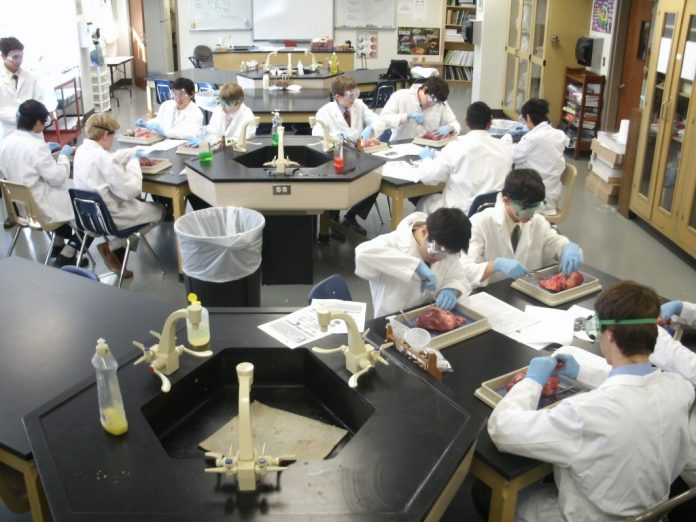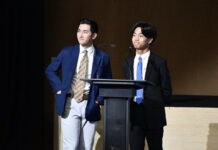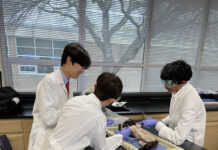On Wednesday, November 5th, members of Jesuit’s Medical Society embarked on a field trip to the UT Southwestern Medical School. According to Mr. Max von Schlehenried, one of the directors for the Medical Society, this trip to UT Southwestern was a part of a larger program, known as the STARS Program, which stands for Student Teacher Access to Resources at Southwestern. “It was designed mainly for public school students who didn’t have great science programs so that they would be able to have opportunities to show their kids real world situations and applications of science, to kind of get them excited for that field.” However, the program was later opened to private schools, allowing the Medical Society to participate in these field trips for about 5 to 6 years.
Continuing on the STARS Program, Mr. Von added, “We also do what’s called the Explorer’s Club, that’s every last Monday of the month. They bring in different medical specialists, and they teach you something and sometimes there is a hands-on activity. And then we also have the rising seniors, three of them in the summer, between their junior and senior years, can apply to the program to work in research facilities. So the STARS Program is this really big thing, so the field trips to Southwestern are little parts of that program.”
The Medical Society started the trip by attending two labs at the Medical School that focused on the different aspects of neuroscience. Alejandro Rey Hipolito ’16, a member of the Medical Society, went into further detail on these neuroscience labs, saying, “We went to 2 labs: One in which researchers were looking for a connection between circadian rhythm and neurons in order to ultimately find a correlation between brain deficiencies and neuron communication. The other lab was using HELA cells to find what a particular virus targets in a cell.”
Hipolito also added that “the most interesting part was either seeing the nitrogen cooled tanks full of HELA cells (which are cells that are basically immortal) or learning about parabiosis (sewing two living things together) and its application to the discovery of leptin (hormone released by fat which tells you to stop eating).” After lunch, they also attended an afternoon lecture involving genetics and rat obesity, which Mr. Von regarded as “an interesting lecture.”
Twelve to thirteen students normally attend these trips, ranging from freshmen to seniors in the Medical Society. Along with himself, Mrs. Jones, and Mrs. Boyle, Mr.Von said, “We had a few freshmen, a few sophomores, and a few juniors. We didn’t have any seniors with us this time. And it’s always cool for the freshmen to be able to go for the first time because they are breaking into the whole Medical Society, so they get to meet some of the upperclassmen. So it’s also a good community building experience for them.”
Mr. Von concluded by saying, “If you are interested in joining the Medical Society, we are always accepting new members. There are a ton of open events that people can come to.”
Look out for the Medical Society next spring during the first ever Medical Issues Day.






